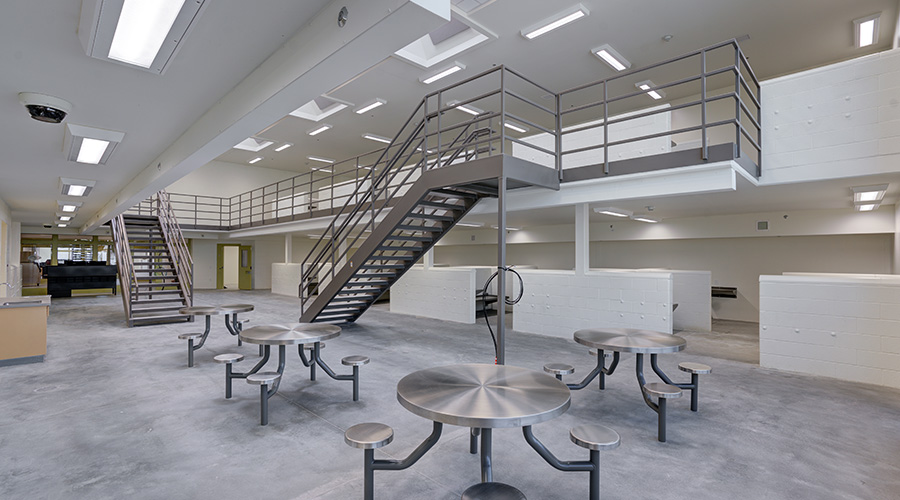A New Era for Lighting
The Energy Policy Act of 2005 creates incentives for managers planning new or retrofit projects
Rising energy prices, coupled with provisions of the Energy Policy Act of 2005 (EPAct05), are prompting maintenance and engineering managers to look for new ways to reduce lighting energy costs. Provisions of the EPAct05 have opened new opportunities in the lighting arena by creating incentives for organizations installing new or retrofit lighting projects.
To help organizations qualify, managers will need to take a closer look at their facilities’ lighting needs, as well as the products and technology to help meet those needs.
The Financial Bottom-line
EPAct05 provides a number of important incentives to reduce energy costs. The most important part of EPAct05 for institutional and commercial buildings is section 1331, which provides a tax deduction up to $1.80 per square foot (psf) for a building using 50 percent less energy than one designed to comply with ASHRAE 90.1-2001.
Lighting and HVAC systems and the building envelope each receive a deduction of $0.60 psf for their contribution to the 50 percent savings. The provision applies to qualifying new construction, renovation and retrofit projects put in service from Jan. 1, 2006, to Dec. 31, 2007.
The U.S. Treasury Department has yet to issue regulations for the whole-building deduction, but the act provides interim rules for lighting systems. Unless and until the department issues a different final rule, the law specifies that organizations can deduct $0.30 psf, provided the system:
-
employs dual switching, which is the ability to switch off roughly one-half the lights while maintaining fairly uniform light distribution
-
reduces installed lighting power by at least 25 percent from levels specified in tables in ASHRAE Standard 90.1-2001.
Systems can qualify for a deduction of $0.30-0.60 psf for savings in lighting power density (LPD) — measured in watts per square foot (w/sf) — of 25-40 percent, respectively. The deduction is linear between $0.30 and $0.60, and managers can calculate intermediate values by interpolation.
As EPAct05 is written, the LPD for existing systems does not matter. What matters is how much it can be reduced compared to the ASHRAE 90.1 2001 standards.
The table on page 15 shows examples of eligible tax deductions per square foot for reductions below the LPD standards of ASHRAE 90.1-2001 for three of the many types of qualifying spaces — offices, classrooms and warehouses. Values shown are the power-density targets that projects must meet to obtain each level of tax credit.
Interpolation is allowed up to 40 percent for all but warehouse lighting systems. In these cases, the LPD must be 50 percent lower than the minimum requirements of ASHRAE 90.1-2001 to claim a deduction.
For privately owned buildings, the owner, person or entity that paid for the construction or renovation earns the deduction. For publicly owned buildings — federal, state or local government or a political subdivision — the law states that the secretary of the U.S. Treasury will create a regulation “to allow allocation of the deduction to the person primarily responsible for designing the property in lieu of the owner of such property. Such person will be treated as the taxpayer for purposes of this deduction.”
Ingenious managers who understand this provision will seek out project partners motivated by this incentive.
The web site of Tax Incentives Assistance Project, www.energytaxincentives.org, provides more details. Sponsored by a coalition of public-interest, nonprofit groups, government agencies, and other organizations in the energy-efficiency field, the site gives visitors information needed to make use of the federal incentives for energy-efficient products and technologies under EPAct2005.
The National Electrical Manufacturers Association also can provide detailed information on commercial building tax deductions at www.nema.org/gov/energy/upload /commbldgtaxdeduction.pdf.
Focus on Components
Section 135 of the EPAct05 contains standards for lighting products, such as illuminated exit signs and screw-base compact fluorescent lamps (CFLs) made after Jan. 1, 2006. Some Energy Star® voluntary standards now in effect will become law.
The act also includes a previously passed ballast law that requires higher efficiency standards for T12 ballasts made after Jan. 1, 2009, sold by manufacturers after Oct. 1, 2009, or installed in fixtures after July 1, 2010. This provision aims to make the premium cost of T12 electronic ballasts unattractive, indirectly promoting T8 technology.
After Jan. 1, 2008, manufacturers no longer can produce mercury-vapor lamp ballasts. This requirement was chosen as a practical means of increasing system efficiency by using energy-effective alternatives, such as metal halide (MH) lamps or CFLs, and by phasing out low-efficiency, mercury-vapor technology. EPAct05 does not affect mercury-vapor lamps.
Now is the time for managers to look at new lighting fixtures that can provide quality lighting in offices or classrooms, such as new three-lamp T5 troffers and indirect fixtures. The deduction will help pay for this equipment upgrade, but the real payoff might come from improved productivity.
Managers should specify lighting products that will permanently reduce their organizations’ lighting energy costs. For example, when using new low-wattage T8 lamps — in 25, 28 or 30 watts (w) — there is nothing to prevent future relamping projects from using standard 32w lamps, eliminating the temporary savings obtained from the lamp change.
Managers in many institutional and commercial facilities are replacing high-ceiling lighting systems in warehouses, gymnasiums and elsewhere with either pulse-start MH or high-intensity fluorescent (HIF) systems. Others are converting incandescent systems to low-wattage, ceramic MH systems powered by electronic ballasts.
Strategies for Savings
Managers have a range of strategies to consider when planning for upgrades of lighting systems to qualify for tax credits.
For office spaces, the 40 percent reduction required to achieve a target LPD of 0.78 w/sf and qualify for the tax deduction of $0.60 psf is straightforward. Managers can specify commonly and well-established products, including: high-lumen F32 T8 lamps; high-efficiency electronic ballasts; and high-performance fixtures, such as suspended indirect fixtures.
Classroom lighting systems also can benefit from upgrades similar to those for office spaces. Managers also might consider affordable indirect lighting systems designed for classrooms. These systems include simple controls.
For example, manufacturers have introduced integrated lighting systems designed for use in California classrooms that incorporate high-quality, direct/indirect fixtures. Some also include a whiteboard fixture and unique controls to deliver different lighting modes the classroom instructor can control. For more information on the California Energy Commission’s lighting research program, visit www.energy.ca.gov/pier/buildings/projects/500-01-041-0.html.
For high-ceiling areas, such as lobbies and atria, managers can specify many new high-wattage CFL or low-wattage ceramic MH systems to qualify for the deduction.
Managers face a challenge in selecting a lighting upgrade for warehouse spaces, which requires a 50 percent reduction — to 0.6 watts per square foot — to qualify for the deduction of $0.60 per square foot. One-for-one replacements of existing high-intensity discharge (HID) lighting systems with high-bay fluorescent systems require scrutiny, but specifiers can easily incorporate dual-switch capability into these systems, since HIF fixtures have multiple ballasts.
For example, a 400-w standard MH system mounted on 20-foot centers meets the ASHRAE 90.1-2001 standard of 1.2 w/sf, calculating to 1.15 w/sf, and replacement with either six-lamp T8 fixtures at 0.56 w/sf or four-lamp T5 HO fixtures at 0.59 w/sf will qualify for the deduction.
To qualify for the deduction, the system must have an LPD that calculates to 0.6 w/sf. Replacement with either six-lamp T8 or four-lamp T5 HO high-intensity fixtures (HIF) will qualify the project. But for 400-w standard MH systems mounted on shorter centers, managers will need to specify a new layout or a mix of four- and six-lamp fixtures to meet the requirement.
Finally, high-pressure sodium (HPS) systems mounted on 25-foot centers can meet the requirement with six-lamp T5 HO fixtures. But HPS systems on 20-foot centers with six-lamp T5 HO replacements calculate to 0.90 w/sf and would not qualify.
With the arrival of EPAct05, the time is right for managers to investigate upgrades of facility lighting systems to obtain the benefits of tax deductions, energy cost savings, and potential productivity improvements.
John L. Fetters, CEM, CLEP is principal of Effective Lighting Solutions Inc. in Columbus, Ohio.
Interim Rules for Lighting Systems
The way the Energy Policy Act of 2005 is written, the lighting power density (LPD) for existing systems does not matter. What matters is how much the LPD can be reduced compared to ASHRAE 90.1 2001. This table shows examples of eligible tax deductions per square foot (psf) for reductions below the LPD standards of ASHRAE 90.1-2001 for three of the many types of qualifying spaces — offices, classrooms and ware-houses. The values shown in watts per square foot (w/sf) are the power-density targets projects must meet to obtain each level of tax credit. Interpolation is allowed up to 40 percent for all but warehouse lighting systems. In these cases, the LPD must be 50 percent lower than the minimum requirements of 90.1-2001 to claim a tax deduction.
— John L. Fetters

|
Related Topics:












